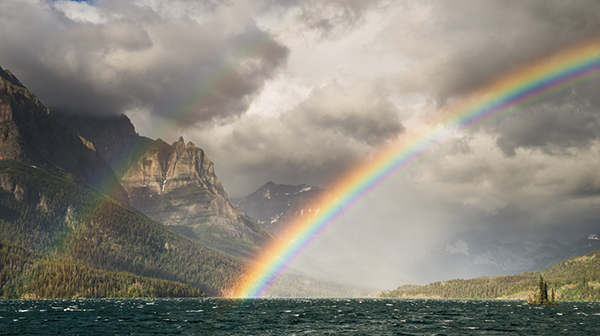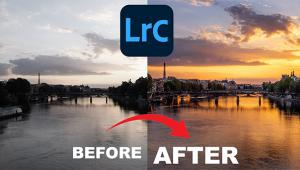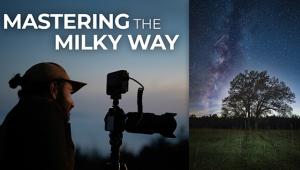7 Essentials For Extreme Outdoor Photography: How To Prepare For Shooting In Tough Conditions

All Photos © Josh Miller Photography
While everyone’s definition of “extreme” is a little different, the one thing that can be said of extreme outdoor photography is it involves leaving the car far behind and dealing with whatever difficulties present themselves without running for cover. To help get you ready for your next extreme shoot, here are my seven most important tools for working in the wild under tough conditions.
1. Lighten the Load
Depending on the adventure, lightening your camera load can range from picking a full size but portable DSLR like a Nikon D800, to a Micro Four Thirds camera system, or all the way down to a quality compact. It all depends on how much hiking/climbing/skiing/rafting vs. shooting I expect to do. If I plan on working near a base camp for several days, I choose the D800 with 16-35mm f/4 and 70-200mm f/4 lenses. But if I plan to be on the move a lot, my Olympus Micro Four Thirds system saves weight at the expense of fast autofocus and file size. On climbing trips where speed and weight are the top priority, I carry a high-end compact like the Sony RX100. While I am sacrificing image quality and autofocus using a point-and-shoot camera, I also know that in these participatory adventures I never would have made it to the summit in the first place carrying my heavy DSLR kit.

2. Camera Pack vs. Chest Pack
First give that old shoulder bag back to your grandpa. For serious outdoor photo adventures, one needs a serious camera backpack or a chest pack. Having tried all sorts of packs over the years, F-stop photo bags, for my money, carry as well or better than my regular climbing packs, while still giving me easy access to my camera no matter how bad the weather is.
On the other hand, if it is more of a participatory adventure where I know I won’t have the time to stop and do a “proper” photo shoot, I carry my simplified camera kit on the outside of my pack in a chest pack or belt system like those made by Think Tank. This allows me to keep up with my companions as we hike/ski/climb but be ready to grab a quick shot when the situation presents itself.

3. Pelican Cases
While not conducive to trips where weight is an issue, Pelican cases are standard photo fare anytime water or dust concerns arise. You can’t do a river trip anywhere in the world without seeing these familiar cases in a wide range of sizes being used by guides and clients alike. Having taken thousands of dollars of camera gear down some of the most remote rivers in North America I wouldn’t trust my gear to anything else. They are easy to use, come in a range of sizes (some with wheels), have simple user-replaceable O-rings (bring an extra on any big trip), are crushproof (nice seat around the campfire), and if strapped to a boat correctly allow nearly instant access to gear.

4. Shoot In Bad Weather
Some of the best and most exciting photos happen in the worst conditions. Often I get my best images after everyone else has turned tail and run for their cars (even those with way more expensive and weatherproof cameras than my own). If there was one bit of advice I would give to aspiring photographers it would be this: your camera can take way more abuse than you think so stop worrying about scratches and start thinking of them as battle scars to brag about.
When the conditions get really bad, using a towel or shirt is a great way to keep your camera dry so you can keep shooting a little longer. If you can predict the bad weather in advance, companies such as Think Tank Photo and AquaTech make really great rain covers that will have you shooting all day long in anything but a swimming pool. Having a good cover means you can still bring home the goods no matter how nasty the weather gets.

5. Headlamps
It seems that most serious outdoor photo adventures either start before sunrise or end well after sunset. A good LED headlamp like those made by Black Diamond for climbers and skiers will have a spotlight mode which works well finding the trail on those alpine starts, as well as a wider flood mode for in camp or working with your camera. If you plan to do any star photography spend the extra money to get a headlamp that also includes a red light. Red light allows you to shoot at night without losing your night vision. When choosing a light, get the brightest weather-sealed light you can find that still only takes AAA batteries. This allows it to still be small enough to fit inside a pocket or ride along in your camera pack without taking up much space. While LED lights seem to last forever, always make sure you have an extra set of batteries.
6. Hand Warmers
Cold is your enemy and once your fingers get cold, it’s all over. When the temperatures really drop, keep a set of disposable hand warmers in the palm of your gloved hands. This helps keep your fingers functional and allows you to wear lighter gloves that make controlling the camera easier. You can extend your shooting session by putting them in your boots under your toes as well. If it gets really cold, put one warmer with your extra battery inside an interior jacket pocket so you have a warm fresh battery to switch to when the one in your camera starts to die from the cold.
7. A Smartphone
This seems almost a given these days but aside from the obvious music and possibility of calling for help if you break a leg, there are several smartphone apps that can increase your success rate in the backcountry. The first is The Photographer’s Ephemeris, which is key to planning your next trip in knowing where the sun/moon will be rising or setting in any given location. The second is a good topographic GPS program that can be used when away from cell service. The ability to find my location on a digital topographic map has helped me reach several off-trail summits in the dark, and also helped me avoid at least two unplanned nights out with no sleeping gear (just remember to download the map before leaving cell service).
Josh Miller’s images have been featured in publications throughout the world and his work is represented by Aurora Photos. To find out more about his work and his workshops, follow Miller on Facebook or Instagram @joshmillerphotography or visit his website at joshmillerphotography.com.
- Log in or register to post comments













































